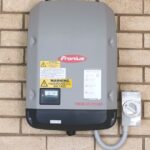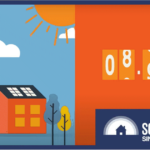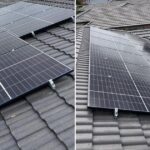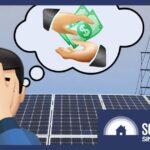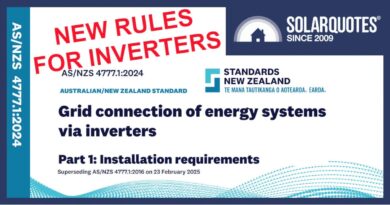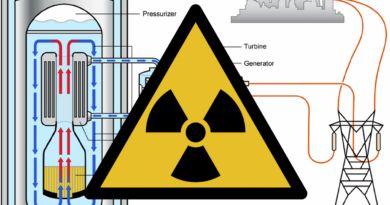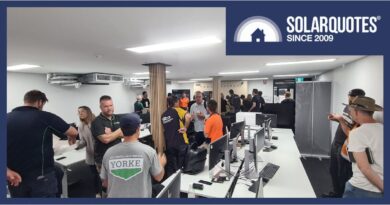Understanding Australian Solar in 2024: Three Key Concepts to Master
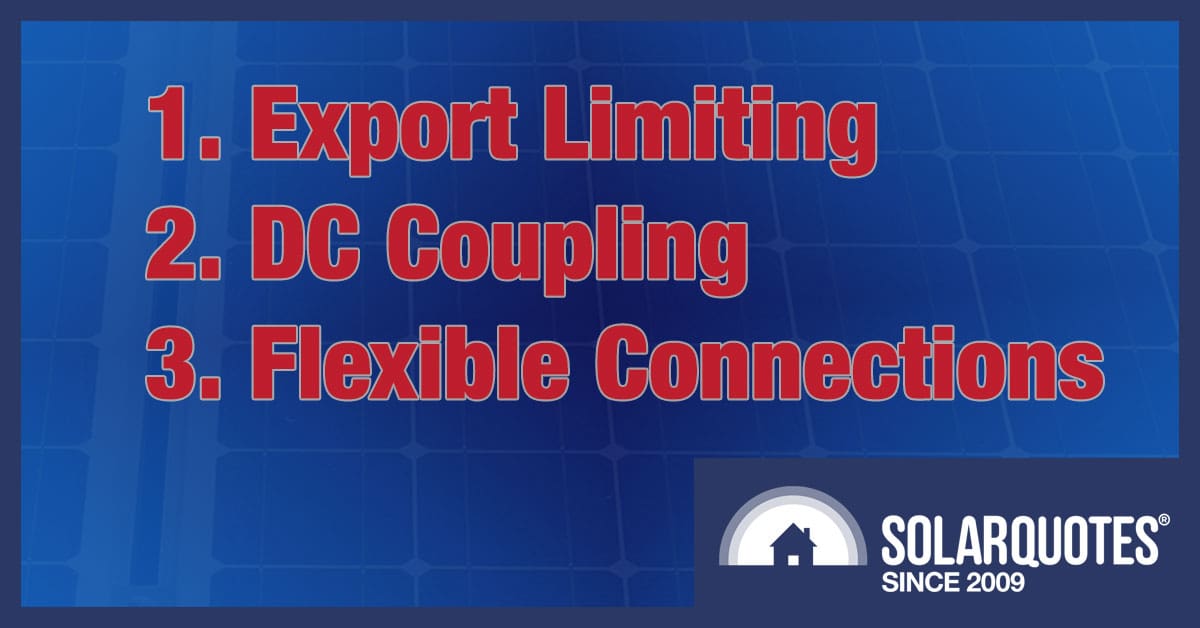
As we enter 2024, Australia’s solar capacity is so high that curtailment is sometimes necessary.
If you own a rooftop solar system that experiences curtailment, that might not sound like good news. However, it’s important to think of the bigger picture. As long-time solar analyst Jenny Chase suggests, we should shift our mindset from energy scarcity to energy abundance.
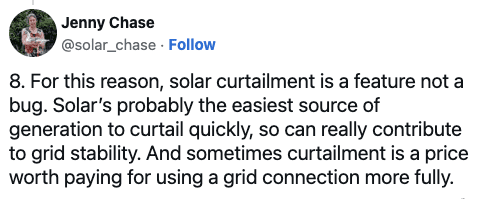
Solar curtailment is a feature, not a bug, so we need to learn not to worry when solar energy is curtailed. If we want enough solar energy to sustain us through overcast days, early mornings, late afternoons, and winters, then part of the design includes curtailing it for a few hours on good solar days1.
To understand how to properly size and utilise rooftop solar in 2024, you must have a good grasp of three essential terms. This knowledge is vital, because for those raised to conserve every kilowatt-hour of energy (due to the fact that every kWh required fuel), the specifics can be quite counterintuitive.
Solar Term #1 Export Limiting
Understanding how Export Limiting works dynamically is crucial to maximising the benefits of your solar energy system and obtaining genuinely free solar energy2.
Understanding Export Limits:
Think of the export limit as a threshold – it’s the maximum energy your solar system can send to the grid at any given moment. Generally set at 5kW (around 22 amps), this limit is imposed by your DNSP (the poles and wires people) because it’s important for maintaining grid stability.
How does it affect your solar experience? Firstly it means that most stack-em-high, sell-em-cheap systems are now sold with a 5kW inverter. If you have a 5kW inverter, you don’t need export limiting because the inverter on the wall becomes the export limit by default.
If your inverter is larger than the export limit, the good news is you will automatically get a little smart meter installed with your solar panels.
@solar_quotes Don’t buy #solar without one of these!
As well as providing proper consumption monitoring via your solar inverter’s app, this little meter enables that 8 or 10kW inverter to throttle it’s output to the grid for export limiting, while still maintaining enough solar output to satisfy your needs at home.
Export Limiting In Action
Imagine this simplified scenario: your home is using no energy, your export limited system (8 kW inverter export limited to 5 kW) system is generating and exporting 5kW happily but can generate an extra 2 or 3 kW because you’ve oversized the inverter and the array on the roof.
Using our 5kW export limit as an example, when you turn on your 2kW kettle, the consumption meter registers some extra load and your solar system adapts. Provided there’s enough sunshine, the inverter will ramp up to 7kW meaning you can use this ‘free’ energy to power your appliances while maintaining your exports to the grid.
When you hit the export limit, the excess energy available isn’t given to the network, it simply isn’t generated3.
But if you have a use for it, or place to store it, the solar energy doesn’t need to be curtailed. This image shows how turning on a hot water heater increases solar generation on an export limited system.
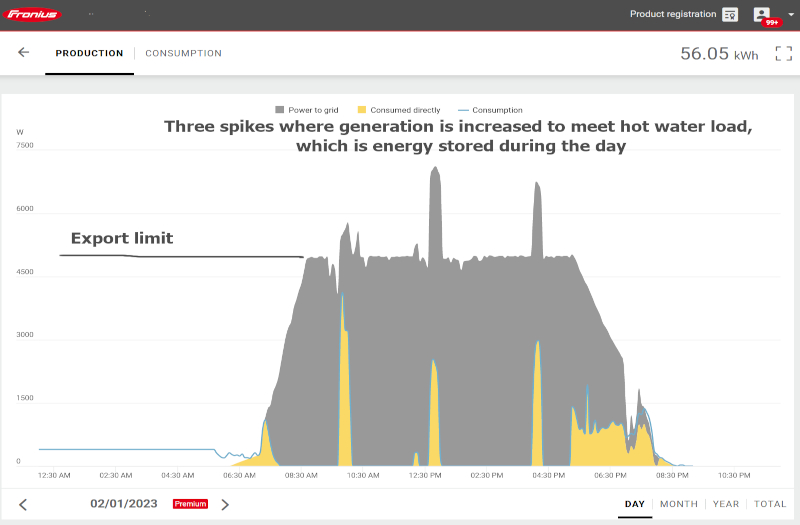
The spikes are energy you’ve invested in that will be curtailed without storage.
The key thing to understand about export limiting is that increasing consumption can increase generation, reducing curtailment. And properly understanding how export limiting works also helps owners of modern solar systems understand why their solar generation bounces up and down throughout the day.
Solar Term #2: DC Coupling
Why DC Coupling makes sense in Australia
Integrating a home battery allows you to add more panels to an inverter than the regulations allow for non-battery systems or AC-coupled battery systems.
DC coupling means that the DC electricity from the solar panels, doesn’t go through your inverter before charging your battery. Some of the panels in your array can connect directly into the battery charger, charging the battery with DC.
A DC coupled design allows a 20kW solar array with 10kW inverter. Without the battery, you’d be limited to 13.3 kW of panels.
With a DC coupled hybrid inverter you could charge your EV with 7kW, export 3kW to the grid, and because of the DC coupling, directly store an additional 5kW or more in your home battery.
It’s about creating a versatile energy ecosystem at home, where every watt counts and is used, or stored, optimally. SQ General Manager, Trev is currently nerding out over this because it’s just what he’s done at home. It works brilliantly. Now we just have to get a hot water tank that will store even more energy for him.
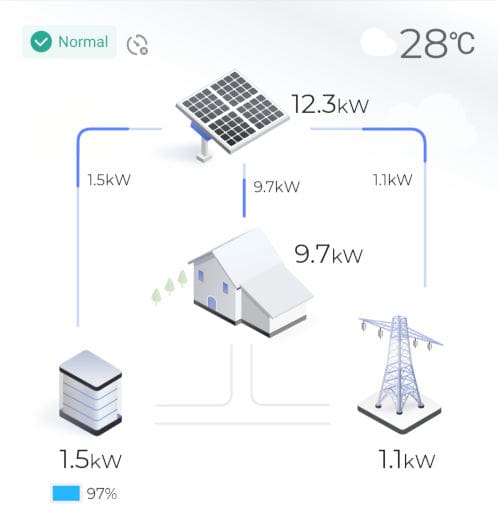
20kW of solar, 10kW inverter, 7kW of car charging is included under the 9.7kW house figure. Everything is getting charged at Trev’s house. The 10kW inverter is inverting 10.8 kW (800W over the nameplate), and the battery is directly charging with 1.5 kW of DC solar. Trev’s ’10 kW’ system can happily generate close to 16kW when the battery is charging at 5 kW.
A DC coupled battery is one of the few ways you can get 20 kW of solar panels on a single phase home.
Solar term #3 Flexible Connections
(also known as ‘Flexible Exports’, ‘Variable Export Limits’ or ‘Dynamic Connections’)
Flexible connections for grid connected solar systems are now upon us. They are an export limit that is not fixed, but can change throughout the day. For example, during a heatwave where demand is high, your export limit may be 10kW. But in the middle of a mild, sunny day, it may be throttled down to 1.5 kW or even zero.
While variable exports add another layer of complexity, they typically offer you the ability to export energy at 10 kW during unrestricted times.
This shouldn’t be confused with early attempts by South Australia’s DNSP, SAPN to control solar that was growing like weeds. The “smarter homes” program was a dumb approach that often turned solar systems off completely in a knee jerk way. In Queensland they called it an emergency backstop.
Flexible exports is much smarter, it means you’ll still have your own solar for your own use, which is the primary aim in any case. Going on current statistics, SAPN claim they’ve only restricted exports for 2% of the time, a few hours on sunny spring Sundays mainly.
Variable export limits are compulsory for new solar installations in South Australia, optional in Queensland, and announced for Victoria in 2024. Flexible connections are coming everywhere else in Australia soon I’m sure. Though it’s another moving part in a complex system, having more solar available for export is a net benefit to everyone and better than low, fixed export limits.
Solar Curtailment Is Necessary But You Can Work Around It
Understanding export limits and optimising solar setup with techniques like DC coupling is a journey we’re all on together.
I have seen impassioned arguments about “wasting money” on oversized solar power systems that aren’t “efficient” in terms of electricity generated from the installed capacity on the roof. Years ago, having solar facing the wrong way (south) was a laughable idea, but now solar is cheap, and the amount of roof space is the primary constraint; even the south side of the house is a great place for an array.
Those who have dry economic arguments about dollars invested for glass on the roof, and returns that don’t stack up at first glance, are missing the point. Having more solar on the roof means you can import less energy at any given time of day, especially in the mornings and evenings when grid energy is expensive. If there is an export limit involved, then your investment is in some respect genuinely wasted, so being able to divert electricity into your home battery, car or hot water is harvesting genuinely free energy.
The Ultimate Answer: More Solar
So, what’s the upshot? It’s not just about export limits; it’s about expanding your solar capacity to harness more energy at any time of day. By doing so, you’re undercutting legacy fossil generators and making the most of a renewable resource. It’s a win-win.
Footnotes
Original Source: https://www.solarquotes.com.au/blog/three-key-concepts-2024/




